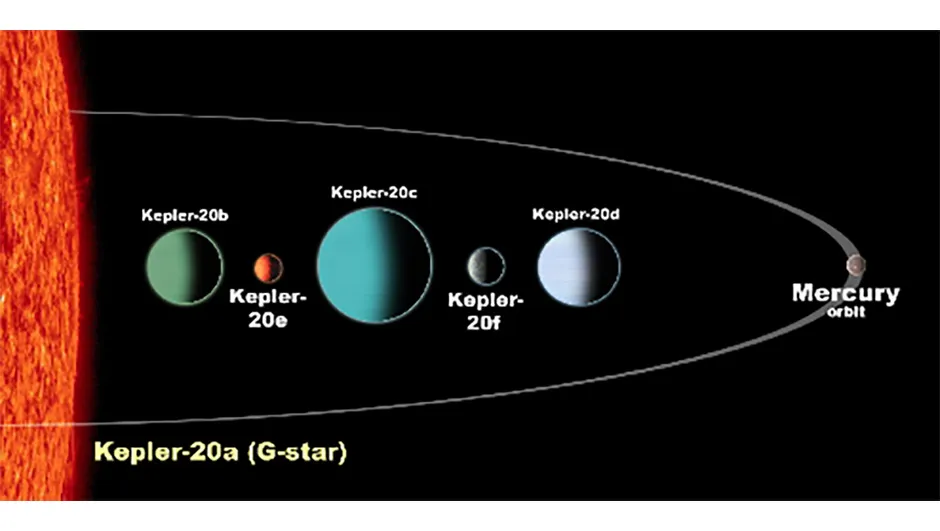Kepler 20e is a little smaller than Earth, and orbits much closer to its parent star. Credit: NASA/Ames/JPL-Caltech
NASA’s Kepler mission has identified two new exoplanets, orbiting the star Kepler-20a in the constellation of Lyra, that, in terms of size at least, are the most Earth-like yet discovered.
Kepler-20a is a G-type star similar to our own Sun, and lies 945 lightyears from Earth. Scientists already knew of three planets – Kepler-20b, -20c and -20d – in orbit around it, but these are large gas planets, similar to Jupiter or Saturn.
The newly-discovered Kepler-20e and Kepler-20f, by contrast, are much smaller, at 0.87 and 1.03 times the radius of Earth respectively.
Little is known about the planets' composition, but this is without a doubt an important breakthrough in the search for ‘another Earth’.
Francois Fressin of the Harvard-Smithsonian Centre for Astrophysics said:
“This discovery demonstrates for the first time that Earth-size planets exist around other stars, and that we are able to detect them.”

However, the similarities with Earth end with the planets’ size. Kepler-20e and -20f orbit their parent star much more closely than Earth orbits the Sun – you could fit the entire Kepler-20 system within the orbit of Mercury – and consequently are much, much hotter than Earth, with surface temperatures of around 760°C (1,400°F) and 425°C (800°F) respectively.
This means the planets are incapable of supporting liquid water, and therefore life as we know it.
The two planets also have much shorter years than Earth, because of their tighter orbits – a year on Kepler-20e lasts just 6.1 days, a year on Kepler-20f just 19.6 days.
NASA animation summarising the new discoveries
The search continues
The Kepler mission searches for exoplanets by detecting fluctuations in light caused by planets passing in front of their parent stars.
The discovery of the two new planets follows the discovery earlier in December of Kepler-22b.
Where Kepler-20e and -20f are Earth-sized, but do not lie within their star’s habitable zone, Kepler-22b lies within the habitable zone, but is considerably larger than Earth and thought to be a primarily gaseous body.
Kepler deputy science team lead, Natalie Batalha of San Jose State University, said:
“In the cosmic game of hide and seek, finding planets with just the right size and just the right temperature seems only a matter of time.
We are on the edge of our seats knowing that Kepler’s most anticipated discoveries are still to come”

In the meantime, scientists are also interested in how the make-up of the Kepler-20 system is very different from that of our own Solar System.
Instead of having small, rocky planets close to the parent star and gas giants further out, the two types of planet alternate in the Kepler-20 system.
“The Kepler data are showing us some planetary systems have arrangements of planets very different from that seen in our Solar System,” said Kepler scientist Jack Lissauer, of NASA’s Ames Research Center in California, “[revealing] new insights about the diversity of planets and planetary systems within our Galaxy.”